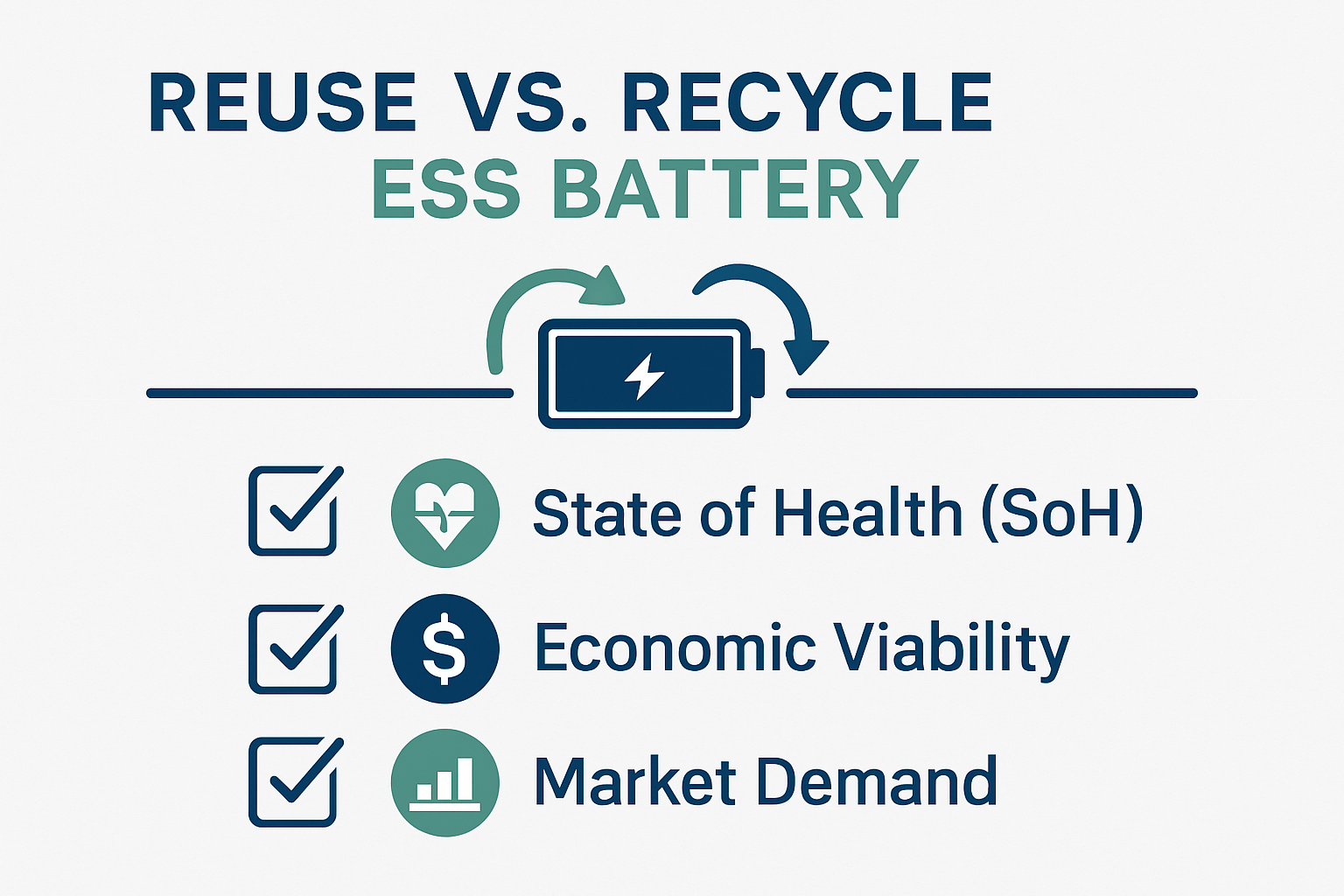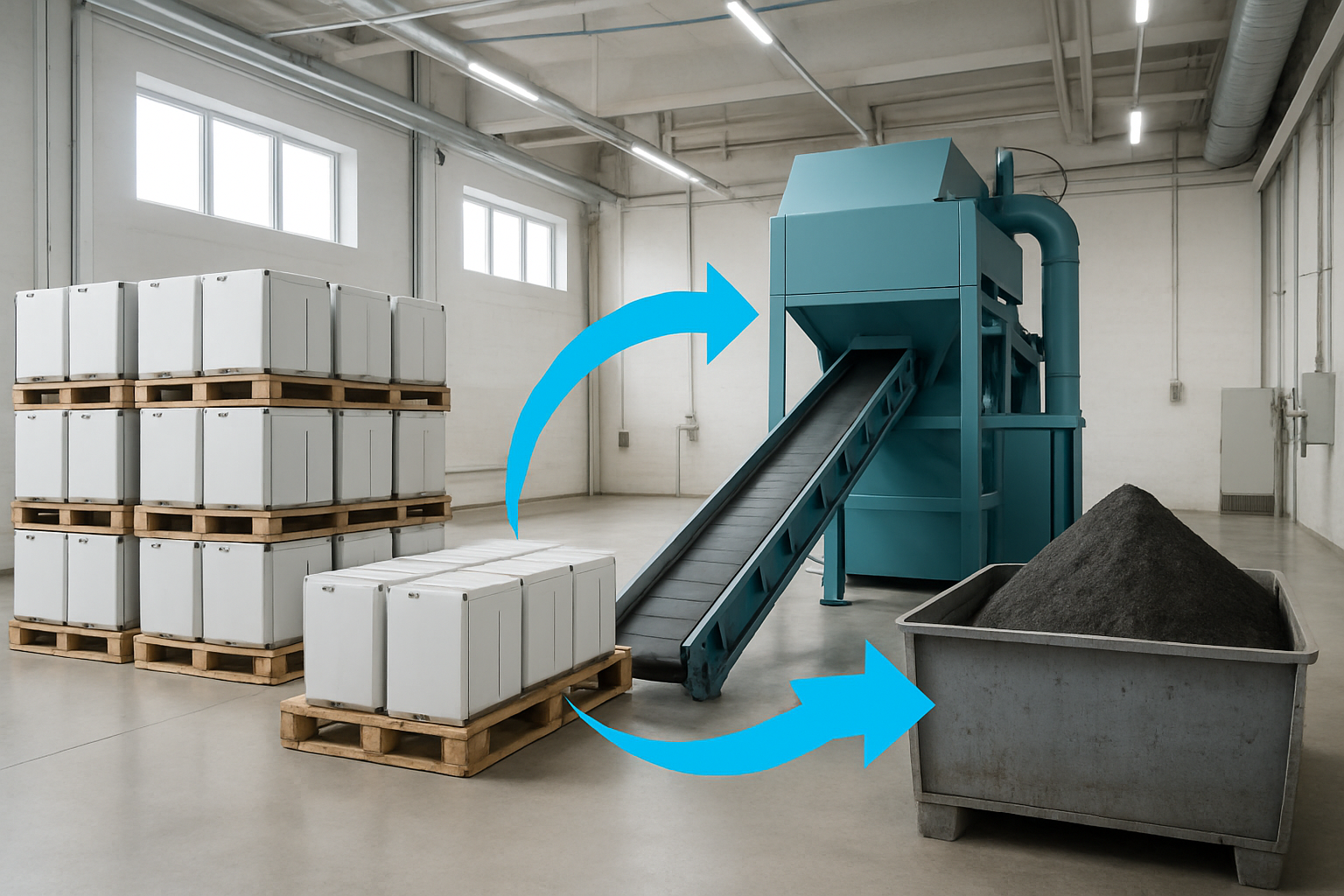As energy storage systems become more common, a new challenge emerges: what happens to batteries at the end of their service life? Landfilling is not a sustainable answer. It poses significant environmental risks and wastes valuable resources. The key to unlocking a circular economy for batteries lies in safe and efficient transportation from their point of use to a recycling facility. This process is more complex than it sounds, involving strict regulations and safety protocols to manage inherent risks.
The Hidden Dangers of Improper Battery Disposal
Discarding high-capacity batteries improperly creates substantial risks. Understanding these dangers highlights the importance of a structured approach to managing end-of-life batteries, where safe transport is the critical first step toward responsible recycling.
Environmental Risks of Landfilling
When batteries end up in landfills, their protective casings can eventually corrode and break down. This allows hazardous materials, such as heavy metals and corrosive electrolytes, to leach into the soil and groundwater, causing long-term contamination. Furthermore, landfilling discards valuable materials like lithium, cobalt, and nickel. Recovering these materials through recycling is essential for building a sustainable supply chain for future energy technologies.
Safety Hazards in Transit: Understanding Thermal Runaway
Transporting end-of-life lithium-ion batteries presents a unique set of challenges. As noted in a report by the International Energy Agency, the high energy density and flammable organic electrolytes in these batteries create a risk of thermal runaway. This is a chain reaction where an increase in temperature causes the cell to vent flammable gas, leading to a fire or explosion that can spread to adjacent cells. This risk is heightened in used batteries, which may have unseen damage or degradation, making strict handling and transport measures non-negotiable.

Regulatory Hurdles and Why They Matter
The path from a decommissioned battery to a recycling facility is paved with regulations. These rules are not just bureaucratic red tape; they are essential frameworks designed to protect public safety and the environment. However, navigating them can be a significant challenge.
Navigating the Complex Web of Regulations
Regulatory barriers are a persistent issue in the battery recycling industry. According to the IEA's report, The State of Energy Innovation, harmonizing regulations on the international movement of batteries is a key step toward improving recycling efficiency. Different regions and countries have varying rules for classifying, packaging, and documenting hazardous materials, which can complicate the logistics of moving batteries across borders. Clear, standardized guidelines are needed to streamline this process.
The Role of Extended Producer Responsibility (EPR)
Extended Producer Responsibility (EPR) is a policy approach where manufacturers are given significant responsibility for the treatment or disposal of post-consumer products. As the IEA points out in its analysis of critical minerals, some EPR schemes have achieved very high recycling rates. For these programs to be effective, policymakers must set clear objectives and apply them consistently to all market players. Effective EPR programs ensure that the entire value chain, from production to end-of-life management, incorporates recycling into its business model.
Best Practices for Safe Battery Transportation
Mitigating the risks associated with transporting used batteries requires a combination of proper handling, secure packaging, and clear communication. Adhering to these best practices ensures that batteries arrive at their destination safely, ready for recycling.
Essential Packaging and Handling Protocols
Correct packaging is the first line of defense against in-transit incidents. Each battery should be handled as a potentially hazardous device. The table below outlines some fundamental do's and don'ts for packaging.
| Action | Best Practice (Do) | Poor Practice (Don't) |
|---|---|---|
| Terminal Protection | Cover all terminals with non-conductive caps or tape to prevent short circuits. | Leave terminals exposed or use conductive tape like aluminum foil. |
| Individual Separation | Place each battery in its own non-conductive bag or packaging. | Pack multiple batteries together where they can touch and short-circuit. |
| Cushioning | Use non-conductive cushioning material (e.g., vermiculite or foam) to prevent movement and absorb impact. | Allow batteries to move freely inside the container. |
| Outer Container | Use a strong, rigid, and sealed outer container made of wood, fiberboard, or plastic. | Use a flimsy or damaged cardboard box that offers little protection. |
Labeling and Documentation: The Paper Trail for Safety
Clear and accurate labeling is crucial. Lithium-ion batteries are typically classified as Class 9 Miscellaneous Dangerous Goods for transport. Packages must display the correct hazard labels, handling instructions, and shipping information. Proper documentation provides emergency responders with vital information in case of an incident and ensures the shipment complies with national and international transport regulations.
The Importance of Data Exchange and Collaboration
An efficient and safe recycling loop requires collaboration. As highlighted in an IEA report on The Role of Critical Minerals in Clean Energy Transitions, policies that enable data exchange between key stakeholders are necessary. A prime example is the collaboration between BMW, Umicore, and Northvolt, which created a “closed life cycle loop.” In this model, the manufacturer collects its end-of-life batteries, sends them directly to the recycler, and the recovered materials are then used to produce new battery cells. This level of integration improves efficiency and accountability.
Turning a Challenge into an Opportunity
While transporting end-of-life batteries safely presents logistical challenges, it also opens the door to significant economic and environmental benefits. Every battery safely transported to a recycler is a step away from the landfill and a step toward a sustainable future.
The Economic Case for Recycling
Used batteries are not waste; they are a valuable resource. The market value of recycled battery metals grew nearly elevenfold between 2015 and 2023. Safely collecting and transporting these batteries is the first step in tapping into this economic potential. By recovering critical minerals, recyclers reduce the reliance on new mining and create a more resilient domestic supply chain.
Environmental Benefits of a Circular Economy
The environmental argument for recycling is compelling. The IEA states that using recycled nickel, cobalt, and lithium can reduce greenhouse gas emissions by up to 80% compared to producing these materials from primary mining and refining operations. By establishing robust and safe transportation logistics, we enable a circular economy that minimizes waste, conserves natural resources, and lowers the carbon footprint of energy storage technologies.
A Critical Link in the Chain
Safely transporting end-of-life batteries is more than a logistical task; it is a critical link that connects responsible battery ownership with a sustainable circular economy. By understanding the risks, adhering to regulations, and implementing best practices, we can prevent hazardous materials from entering landfills. This ensures that the valuable resources within every battery are recovered and reused, supporting the transition to a cleaner energy future.
Frequently Asked Questions
Why can't I just throw old batteries in the trash?
Discarding batteries in household trash is dangerous. They can be damaged during collection and transport, creating a fire hazard. If they end up in a landfill, they can release toxic chemicals into the environment, contaminating soil and water. Always take end-of-life batteries to a designated collection point or certified recycler.
What is thermal runaway and why is it a concern for battery transport?
Thermal runaway is an uncontrollable, self-heating state in a battery cell that can lead to fire, gas venting, and explosion. It is a major concern during transport because vibrations, impacts, or short circuits can trigger it in damaged or improperly packaged batteries, posing a significant safety risk.
Who is responsible for ensuring the safe transport of end-of-life batteries?
Responsibility is shared across the supply chain. The original owner is responsible for handing the battery over to a qualified collector. The collector, shippers, and transporters are responsible for adhering to all packaging, labeling, and handling regulations. Under Extended Producer Responsibility (EPR) schemes, the original manufacturer often retains a degree of responsibility for the battery's entire lifecycle.





Leave a comment
All comments are moderated before being published.
This site is protected by hCaptcha and the hCaptcha Privacy Policy and Terms of Service apply.